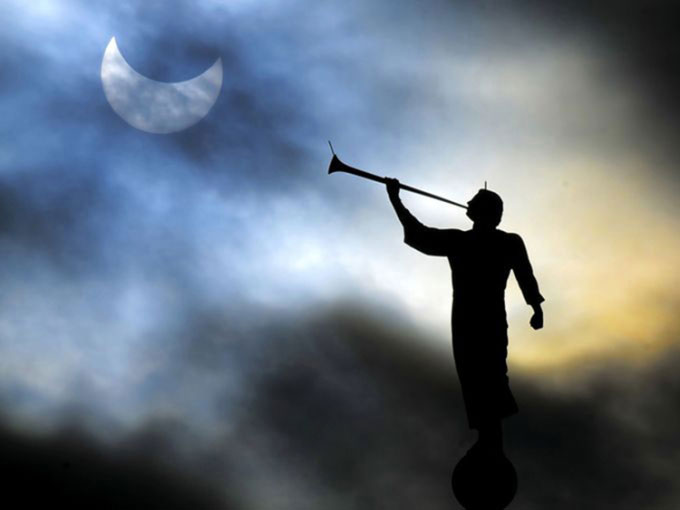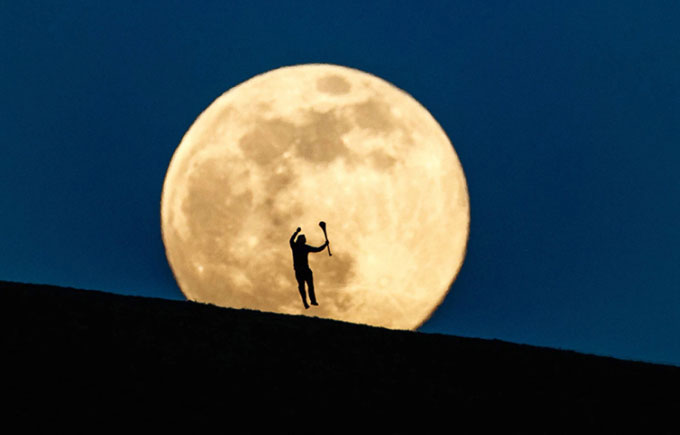Astronomy enthusiasts will have the opportunity to witness planetary conjunctions, solar and lunar eclipses, supermoons, and numerous meteor showers this year.
Top 12 Notable Astronomical Events in 2022
- Three Planet Conjunction (End of March)
- Lyrid Meteor Shower (April 4-5)
- Black Moon (April 30)
- Partial Solar Eclipse (April 30 and October 25)
- Eta Aquarid Meteor Shower (May 4-5)
- Total Lunar Eclipse (May 15-16 and November 8)
- Supermoon (June 14, July 13, and August 12)
- Five Planet Alignment (June 24)
- Perseid and Orionid Meteor Showers (August 12-13)
- Orionid Meteor Shower (October 20-21)
- Mars at Greatest Brightness (December 8)
- Geminid Meteor Shower (December 13-14)
Three Planet Conjunction (End of March)
Mars, Saturn, and Venus will appear very close together in the sky during the last two weeks of March, close enough to fit within the same field of view of some binoculars and ground telescopes.
This planetary conjunction will continue into April, with Mars and Saturn almost overlapping in the sky on the mornings of April 4 and 5. Venus will have moved slightly farther away by then.
Lyrid Meteor Shower (April 4-5)
April is a global astronomy month, and most people around the world will have the chance to witness the Lyrid meteor shower peak on the night of April 21 and the early morning of April 22, with about 15 meteors visible per hour.
Lyrid meteor shower streaking across the Changbai Mountains in China in April 2017. (Video: Guardian).
Black Moon (April 30)
The third major astronomical event of the year is the phenomenon that cannot be observed, even with a telescope. The term “black moon” is used to describe the second new moon in a calendar month, a time when the illuminated part of the Moon is facing away from Earth.
Although the black moon cannot be seen in the sky on the last day of April, it presents a good opportunity to observe stars, as they won’t be overshadowed by the Moon’s light.
Partial Solar Eclipse (April 30 and October 25)
In 2022, there will be no total solar eclipse, but two partial solar eclipses will occur. The first event will take place on April 30 and can be observed from southern South America. The second event will occur on October 25, visible in Europe and parts of northern Africa.

Partial solar eclipse atop a church in Brigham City, Utah, USA, in October 2014. (Photo: AP).
Eta Aquarid Meteor Shower (May 4-5)
Less than two weeks after the Lyrids, the next meteor shower of the year, called the Eta Aquarids, will peak on the night of May 4 and the early morning of May 5, with approximately 20-40 meteors visible per hour. This is the best meteor shower observation opportunity of the year for people in the Southern Hemisphere.
Total Lunar Eclipse (May 15-16 and November 8)
The Moon will turn red during the night from May 15 to May 16. This will be the first total lunar eclipse of 2022. The phenomenon can be observed in parts of North America, South America, Europe, Africa, and Asia.
The second and final total lunar eclipse of the year will occur before sunrise on November 8. Some areas in Canada and the USA, including Alaska and Hawaii, will have the opportunity to observe this phenomenon if weather permits. People on the East Coast will miss the total lunar eclipse phase as the Moon will set before reaching the peak of the eclipse.
After the final lunar eclipse of 2022, people in North America will have to wait until March 2025 for the next opportunity to witness a total lunar eclipse.
Supermoon (June 14, July 13, and August 12)
The supermoon will appear three times in 2022, on June 14, July 13, and August 12. A supermoon occurs when a full moon coincides with its perigee, the point in its orbit closest to Earth, making the Moon appear larger than usual when viewed from Earth.

Supermoon shining brightly over Croghan Hill, Ireland in April 2020. (Photo: Inpho).
Five Planet Alignment (June 24)
Mercury, Venus, Mars, Jupiter, and Saturn will align in order and will be bright enough to be seen with the naked eye before sunrise on June 24 in the eastern sky. A crescent moon will also be along this line, between Venus and Mars.
This alignment will only appear from Earth’s perspective. In reality, these celestial bodies are not actually aligned in the solar system.
Perseid and Orionid Meteor Showers (August 12-13)
One of the largest meteor showers of the year will peak during the summer. Under ideal conditions, the Perseid meteor shower can produce 50-100 meteors per hour, but since it coincides with the supermoon on August 12, the visibility of the meteors will be reduced by about half.
Orionid Meteor Shower (October 20-21)
The Orionid meteor shower peaks two months after the Perseids, with about 20 meteors visible per hour. Although not as impressive as the Perseids, the Orionids will have better viewing conditions as the Moon will not be shining all night.
Mars at Greatest Brightness (December 8)
Our “neighbor” planet will reach its greatest brightness on December 8 when it is opposite the Sun from Earth’s perspective. At that time, it will be brighter than most stars in the sky and can be seen throughout the night.
This is the best opportunity for space agencies like NASA to study the red planet. The next similar event will not occur until January 15, 2025.
Geminid Meteor Shower (December 13-14)
The Geminid meteor shower streaking across the sky in Norway in December 2021. (Video: Night Lights Films)
The most anticipated meteor shower of 2022 will peak during the second week of December. Under ideal conditions, the Geminid meteor shower can produce 100-150 meteors per hour, but once again, this spectacular light show will be hindered by the full moon. The same situation occurred in 2021, where the bright moon reduced the visibility of meteors to only 30-40 per hour.


















































